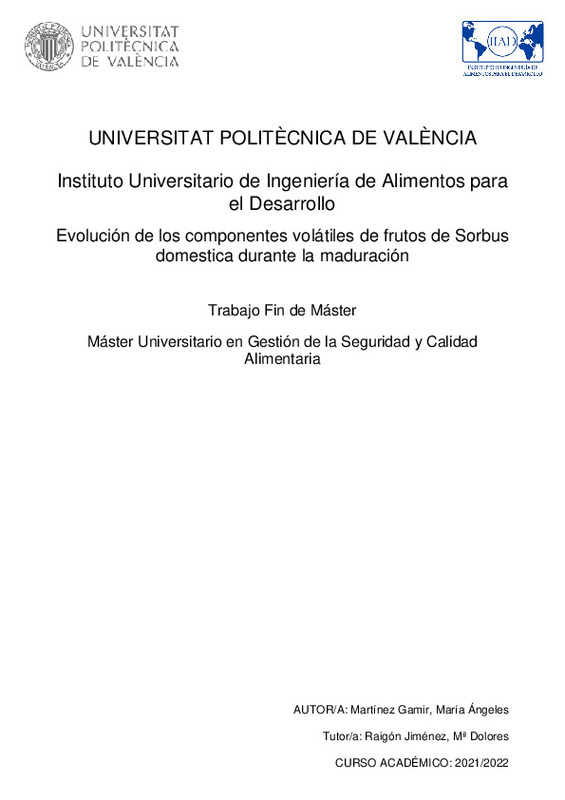|
Resumen:
|
[ES] Las especies vegetales han sido la principal fuente de alimentos para el ser humano a lo largo de la Historia. Este sustento alimenticio se ha producido a través de infinidad de especies, las cuales pueden ser ...[+]
[ES] Las especies vegetales han sido la principal fuente de alimentos para el ser humano a lo largo de la Historia. Este sustento alimenticio se ha producido a través de infinidad de especies, las cuales pueden ser aprovechadas por las hojas, las semillas, las raíces y los frutos. Las plantas que inicialmente se recolectaban de forma silvestre llegaron a domesticarse cuando el ser humano las comenzó a cultivar y seleccionar según el calibre y los sabores. Algunas de las especies comestibles hace años han dejado de consumirse por diferentes razones socioeconómicas. En este sentido, los frutos de Sorbus domestica formaban parte de la alimentación en determinadas zonas rurales de Castilla León y actualmente han dejado de consumirse. El principal objetivo de este trabajo ha sido tipificar la composición volátil de los frutos de Sorbus en tres momentos de la maduración poscosecha, comparando los resultados con el perfil aromático de la manzana y el dulce de membrillo. Se han empleado frutos procedentes de Valladolid y se aplicaron técnicas de cromatografía gaseosa. Se ha establecido el perfil aromático de los frutos de Sorbus domestica, llegando a conocer cuáles son los compuestos aromáticos presentes en el fruto y su variación en función de la etapa de maduración. Los frutos de Sorbus domestica son complejos en su perfil aromático y tienen alto potencial para incluir en los mercados y generar alternativas de producción y de consumo a la par que se recupera patrimonio alimentario.
[-]
[EN] Plant species have been the main source of food for humans throughout history. This food sustenance has been produced through countless species, which can be used by the leaves, seeds, roots and fruits. The plants ...[+]
[EN] Plant species have been the main source of food for humans throughout history. This food sustenance has been produced through countless species, which can be used by the leaves, seeds, roots and fruits. The plants that were initially collected in the wild became domesticated when the human being began to cultivate them and select them according to size and flavours. Some of the edible species have ceased to be consumed for years for different socioeconomic reasons. In this sense, the fruits of Sorbus domestica were part of the diet in certain rural areas of Castilla León and are currently no longer consumed. The main objective of this work has been to typify the volatile composition of Sorbus fruits at three moments of postharvest ripening, comparing the results with the aromatic profile of apple and quince jelly. Fruits from Valladolid have been used and gas chromatography techniques have been applied. The aromatic profile of the fruits of Sorbus domestica has been established, getting to know which are the aromatic compounds present in the fruit and their variation depending on the ripening stage. The fruits of Sorbus domestica are complex in their aromatic profile and have a high potential to be included in the markets and generate production and consumption alternatives while recovering food heritage.
[-]
|







